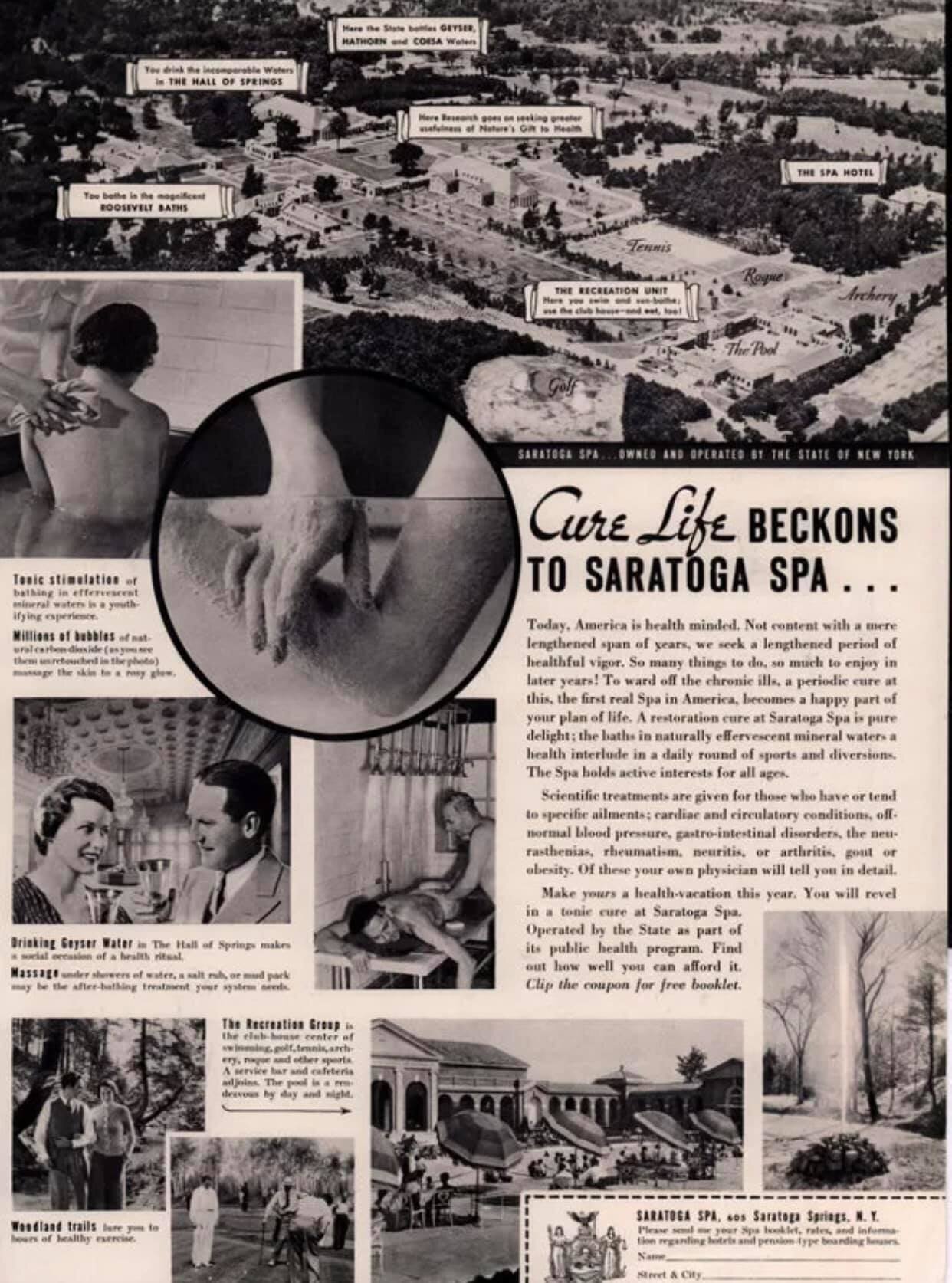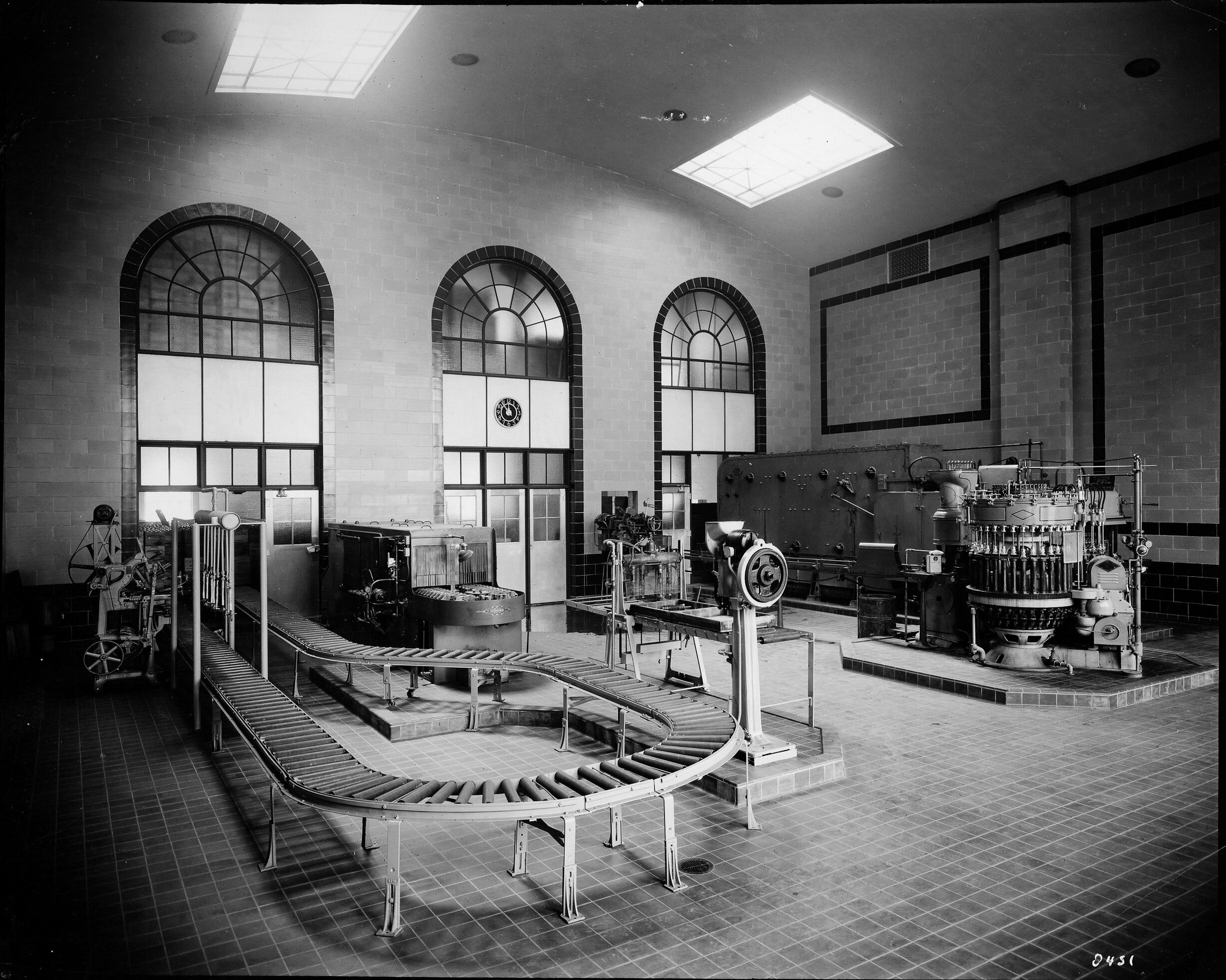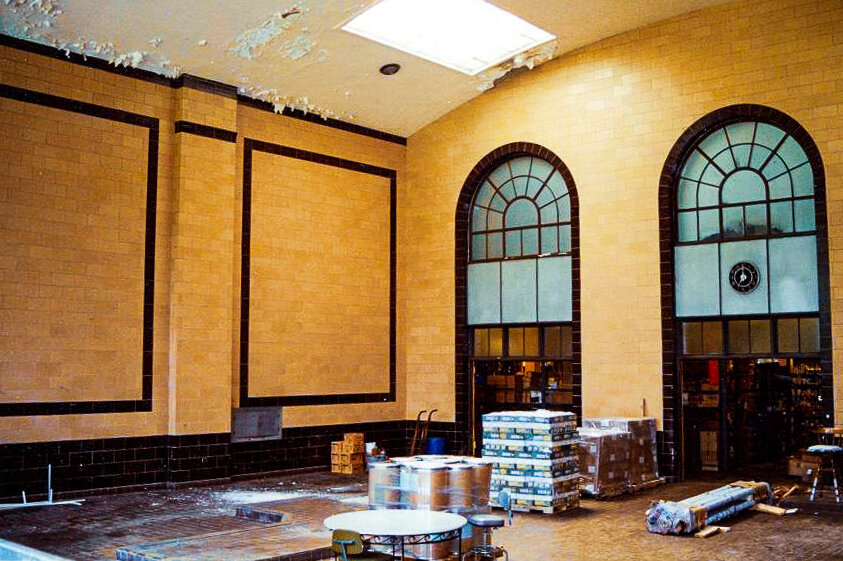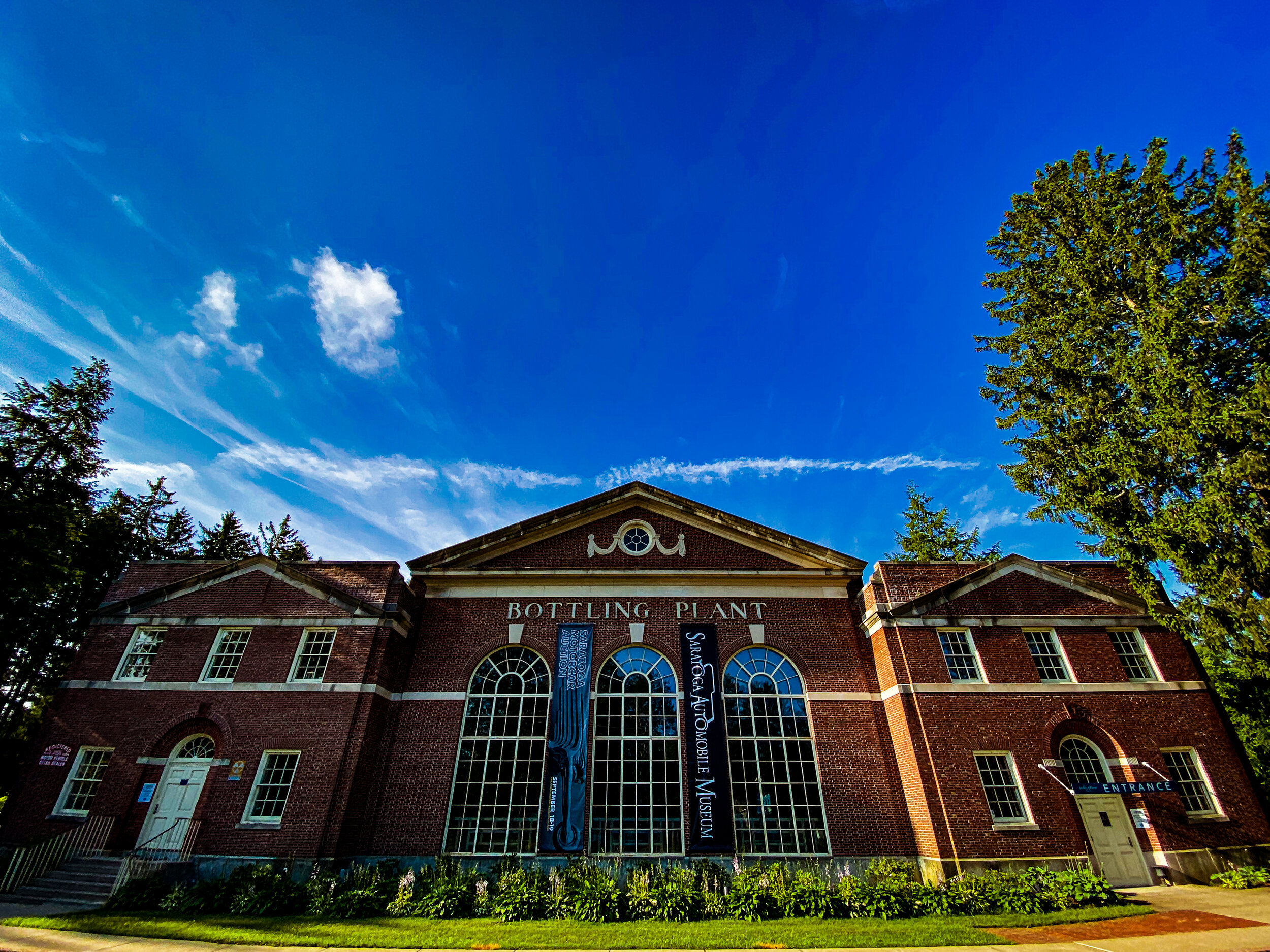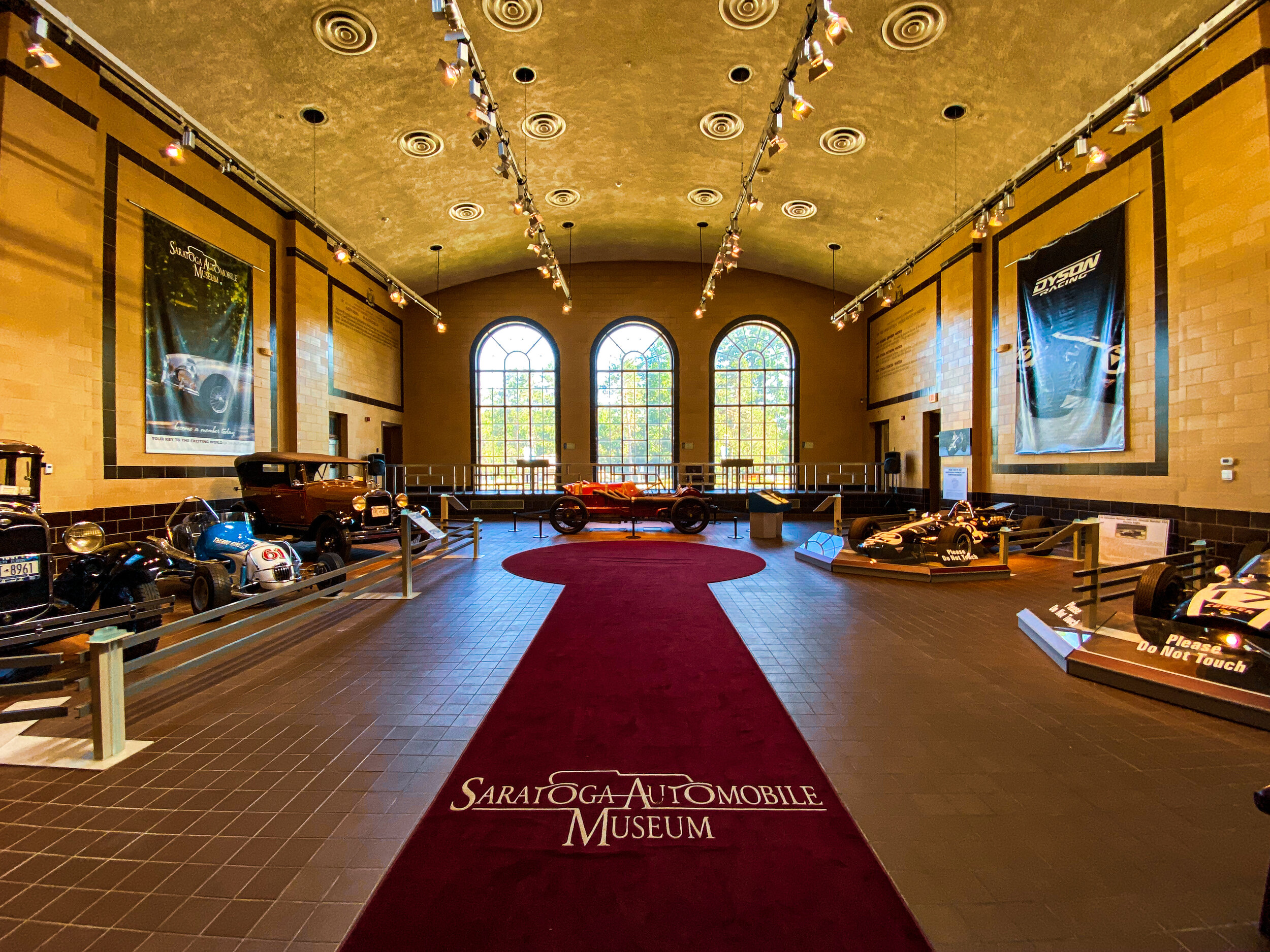THE BOTTLING PLANT
The NYS Bottling Plant - 1937 - Photo provided bt the george s. bolster collection
The History of the Waters
Starting with Iroquois Native Americans, the waters of Saratoga Springs have long been revered as a natural source of health and rejuvenation. As early as the1800s, wealthy Americans flocked to Saratoga to “take the cure.”
The Birth of the Saratoga Spa
In response to the Great Depression, the US Government initiated programs to revitalize the economy. Franklin D. Roosevelt, in his first year as governor of New York State, pushed for the establishment of a state-operated spa that celebrated the natural riches found in Saratoga spring water. Roosevelt, a victim of polio, had a particular interest in the Spa because hydrotherapy was one of the best methods for managing the symptoms of the crippling disease. The State of New York was awarded $3,200,000 by the Reconstruction Finance Corporation, a precursor to the New Deal, to construct the most complete and modern spa to date. Construction of the complex began in 1933. It included a state of the art research laboratory, bathhouses, and several other recreational and therapeutic facilities.
Throughout the 1930s and 1940s, the Spa’s popularity grew rapidly. Widespread marketing campaigns were a crucial element of the Spa’s success. Phrases such as “the Spa that was Inevitable,” “the first real Spa in America,” and “this season take the cure at Saratoga,” flooded advertisement pages in popular magazines like Harper’s Bazaar, Vogue, and the New Yorker. These advertisements also promoted the use of the state bottled water for home remedies.
The last building in the Saratoga Spa complex to be completed was the Bottling Plant. Designed by Architect Dwight James Baum, the Georgian Revival style building contained sophisticated machinery that lead to a high volume bottling operation that lasted for decades.
The plant supported the health and educative mission of the Spa. Guides were employed during the summer months to give tours to visitors. “Dippers” offered samples of the waters and were able to discuss their healthful properties.
The bottling machines began operation in June 1935 a month before the grand opening of the new Saratoga Spa Complex.
Vintage ad for the saratoga spa
Vintage ad for the saratoga spa.
The NYS Bottling plant - machine room - 1935. Provided by the New York State Office of Parks, Recreation, and Historic Preservation.
Bottled Saratoga Geyser Water. Provided by the New York State Office of Parks, Recreation, and Historic Preservation.
Vintage brochure about the bottled Mineral waters.
the four waters that were bottled by the state of New York:
Saratoga Geyser Water: A naturally sparkling water...Prescribed by physicians because of its alkaline properties and its desirable mineral salts...May be taken at any time…
Saratoga Hathorn Water: This saline water carbonated by Nature is primarily laxative…It aids elimination through the intestinal tract…Usually taken before breakfast…
Saratoga Coesa Water: A naturally sparkling saline-alkaline water recommended by physicians for certain conditions of the gall bladder and gastro-intestinal tract…
State Seal Water: The search for a drinking water that was pure and ideal for salt-free diets, and healthy diets in general, led to the discovery of State Seal Water in the State Reservation at Saratoga Springs.
In 1915, chemist Herbert (Doc) Ant of the State Reservation at Saratoga Springs sampled 15 different springs of still water to find a nutritional, good-tasting drinking water to quench public demand. After careful research, Ant discovered a water that had a strong taste appeal and was ideal for low-salt diets. Doctor Ant's water was bottled and commercially sold as "Saratoga State Seal Water."
In 2002, the popular State Seal Spring was moved across the street, under the Joseph L Bruno Pavilion, from its earlier location within the Bottling Plant. This provided easier access, parking and protection in all types of weather for the countless numbers of people who collect the water.
Bottling line. Provided by the New York State Office of Parks, Recreation, and Historic Preservation.
Bottling process. Provided by the New York State Office of Parks, Recreation, and Historic Preservation.
THE BOTTLING PROCESS
“At the bottling plant, a highly perfected process is followed using specially designed equipment so that the delicate balance of gas and minerals will not be disturbed. The waters to be bottled are kept under several atmospheres of pressure, never exposed to air. (Even the air in the bottle is removed before filling.) The bottling operation is performed in a modern plant that is as sanitary as a hospital. For the State of New York requires that the Saratoga Spa be conducted in accordance with the soundest medical and scientific standards… from the safeguarding of the wells… to the bottling… even to the statements made regarding the use of the waters”
- Text from a 1940s Saratoga Spa bottled water brochure
Truck loading at the NYS Bottling Plant - september 1938
NYS Bottling Plant Press Photo - August 2, 1963
The End of an Era
Several factors led to the deterioration of public interest in the Saratoga Spa as a center for healing. Technical and medical advancements, such as the first successful use of the polio vaccine in 1952, and the loss of financial support by the state government in 1960 resulted in the decline of Spa. By 1970, the state was losing over 50,000 dollars a year in bottling efforts alone. In 1971, the state stopped bottling and vacated the building.
Nearly a decade after the bottling plant ceased operations, the state leased the property and bottling rights to Waters of Saratoga Springs, Inc., a private company run by Charles Sterling. After signing a ten-year lease in 1978, Waters of Saratoga Springs began bottling State Seal and Geyser water in the fall of 1980. Due to unknown circumstances, the company stopped production less than a year later, leaving a vacated building used solely for storage by the state.
While public interest in the Spa as a center for health declined, the State and private companies sought new uses for the original buildings and recognized the grounds for their recreational value. In 1962, the state of New York declared the Spa and surrounding land a state park. In 1987, the Spa was declared a National Historic Landmark. Although the Washington Bath House, the Hall of Springs, and the research facility were repurposed during the 1980s, the Bottling Plant remained dark between the years of 1981 and 2000.
THE vacant nys bottling plant. the building was used for spa park storage until its reactivation and renovation in 2001-2002. Museum Archives
New Traditions for a Historic Building
In 1998, an organization of car enthusiasts, interested in the preservation of an American tradition, chartered the Saratoga Automobile Museum. Founders’ believed the museum could offer a new level of understanding and respect for automotive objects, for both the car enthusiast and the general public, through interpreting the automobile a technological device, as an agent for social and economic change, and as an art object.
Although it was already an accredited organization, the museum was lacking an integral component— a building. In 2000, the State leased the former Bottling Plant to the Museum. As a part of the Clean Water and Air Act, the water originally bottled at the plant was rerouted across the Avenue of the Pines to the new Joseph L. Bruno Pavilion, where the public continues to bottle water from the spring today, for free. In order to convert the building into a working museum facility, millions of dollars were allocated to the remodeling of its interior spaces. One of the key projects was the addition of a two-level garage complete with an auto lift. The Museum opened to the public on June 1, 2002.
The Saratoga Automobile Museum - June 2002. Museum Archives.
The Main gallery - june 2002. Museum archives.
The Saratoga Automobile Museum - july 2020. museum archives.
THE MAIN GALLERY - JULY 2020. museum archives.




